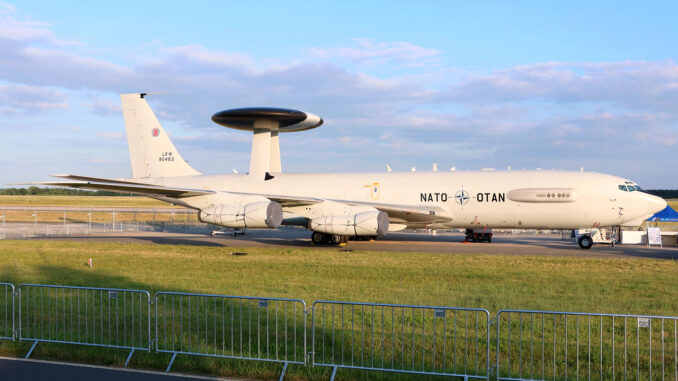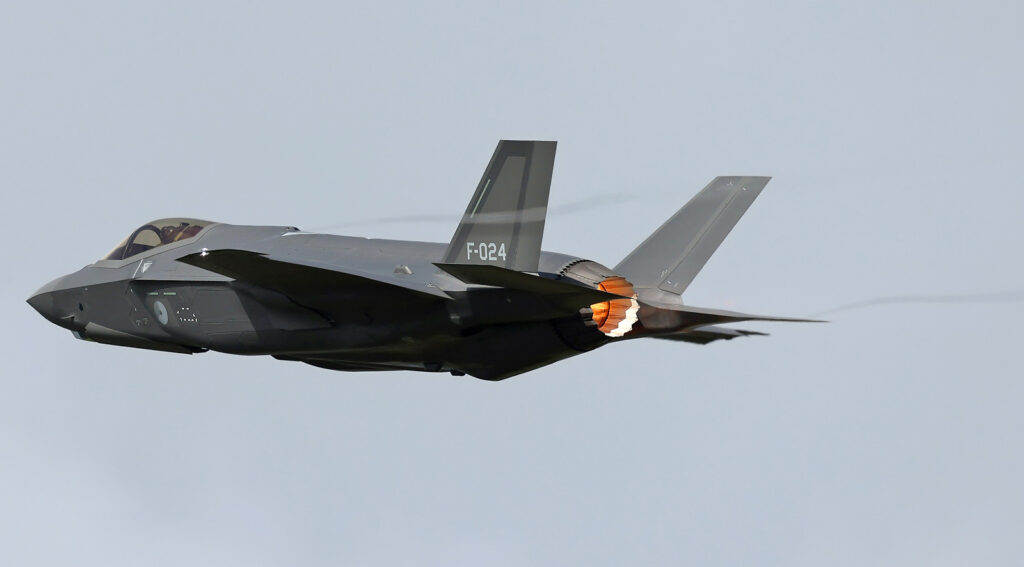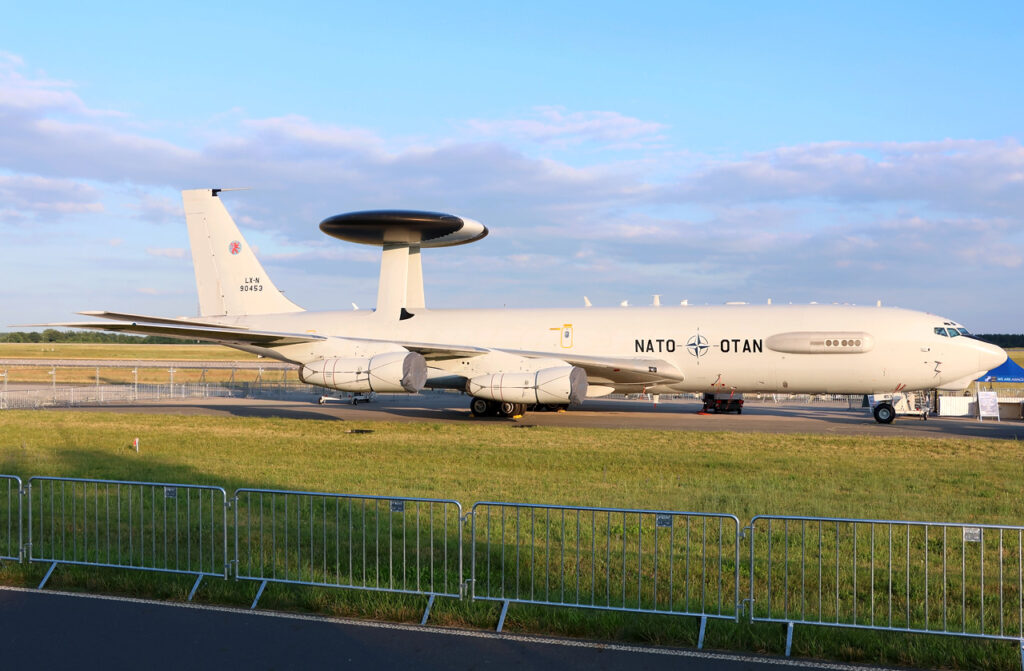
An analysis of the need for air superiority for NATO, its strategic impact and the lessons learned from the conflict in Ukraine.
Air superiority is a key factor in ensuring the success of military operations. The conflict in Ukraine demonstrates the importance of this supremacy for NATO, in particular for the freedom of manoeuvre of the allied forces. This concept, rooted in military history, remains essential for countering modern threats. Exercises such as Ramstein Flag 2024 aim to reinforce this competence, while NATO continues to adapt to technological and economic challenges to maintain its effectiveness.
Air superiority: a strategic imperative for NATO
Air superiority** is a sine qua non for any successful military operation. This concept, well established since the Second World War, is today more relevant than ever, as the war in Ukraine illustrates. Controlling airspace not only protects troops on the ground, but also enables strategic strikes to be deployed with minimal risk of interception.
NATO’s military doctrine attaches paramount importance to this superiority. During the Ramstein Flag 2024 exercise in Greece, the priority will be to train allied forces to rapidly establish this air dominance. The exercise will bring together participants from 13 allied nations, demonstrating the collective commitment to maintaining a ready and capable air force. The manoeuvres will aim to perfect coordination between the different components of the air force, ensuring maximum effectiveness from the outset of a potential conflict.
The conflict in Ukraine is a reminder of just how costly an air ‘status quo’ can be. The human and material losses associated with the absence of air superiority are considerable. For NATO, it is therefore crucial to ensure that its forces are not only well equipped, but also trained and capable of adapting to evolving threats. Air superiority should not be seen as an end goal, but as a necessary precondition for ensuring freedom of manoeuvre and minimising losses in other operational areas.

The role of deterrence by negation: avoiding conflict
Deterrence by negation consists in having a force capable of denying the enemy its strategic objectives. For NATO, this means clearly demonstrating that any attempt at aggression will be met with insurmountable resistance, making the cost of aggression unacceptable to the adversary. This approach is particularly relevant when dealing with authoritarian regimes, which are unlikely to be deterred by public opinion, but which are sensitive to the destruction of their forces or the loss of their regime.
NATO forces must therefore be able to prove their ability to destroy their adversary’s targets from the outset of a conflict. This requires constant preparation, integration of advanced weapons systems and continuous adaptation to new threats, including advanced anti-aircraft systems and precision weapons. Maintaining air superiority plays a crucial role in this strategy, by making any attack on NATO forces costly and impractical.
This posture of deterrence also relies on the economic resilience and capacity of NATO nations to innovate rapidly in response to military challenges. In a world of rapidly evolving technologies, the ability to integrate new solutions into existing weapons systems is essential. Developing air superiority therefore also means investing in research and development, in order to maintain a technological lead over potential adversaries.
Lessons from the Ukraine conflict: the need for a balance of power
The conflict in Ukraine offers valuable information for NATO. One of the key lessons is that high-tech capabilities, while indispensable, are not enough on their own to win a conflict. The proliferation of low-cost threats, such as drones, makes the exclusive use of high-tech weapons unsustainable in the long term. It is therefore crucial for NATO to maintain a balance between high-tech capabilities and more conventional but economically viable means.
Logistical support, ammunition supply and the ability to replace damaged equipment quickly are also critical aspects of maintaining operational effectiveness. Strengthening strategic stocks and improving the resilience of supply chains are becoming priorities to ensure that NATO forces can continue to operate effectively, even in protracted conflict situations.
In addition, the integration of new technologies within NATO forces must be considered right from the design stage of weapons systems, in order to ensure maximum interoperability between the various member nations. This approach, known as integration by design, aims to ensure that systems developed by the various allied countries can work together seamlessly from the start of operations.
Air superiority and economic resilience: NATO’s challenges
NATO is celebrating its 75th anniversary this year, marking a turning point in its history with the accession of Sweden and Finland. This expansion strengthens the alliance, but it also brings its share of challenges, particularly in terms of funding and integrating new military capabilities. Air superiority, while crucial, cannot be maintained without a robust economy capable of supporting the necessary military expenditure.
Economic resilience is therefore at the heart of NATO’s defence strategy. Member nations must not only invest in state-of-the-art weapons systems, but also ensure that their economies can support these investments over the long term. This means prudent management of resources, public-private partnerships for technological development, and increased cooperation between the defence industries of the various Allied countries.
At the same time, NATO must continue to innovate to stay ahead of its potential adversaries. Innovation concerns not only new weapons, but also military doctrines, tactics and force integration strategies. NATO’s ability to rapidly adapt its forces to the new realities of the battlefield will be a determining factor in its future success.

The need for continued air superiority for freedom of action
Freedom of manoeuvre is a fundamental concept for any military operation. Without air superiority, this freedom is seriously compromised, leaving land and naval forces vulnerable to air attack. Military history shows that successful campaigns are those in which air forces have been able to dominate the skies, protecting troops on the ground and enabling decisive offensive operations.
In today’s environment, where asymmetric threats and new technologies such as hypersonic missiles are becoming increasingly common, air supremacy offers an essential strategic advantage. It enables threats to be detected and neutralised before they can reach their targets, thereby reducing losses and increasing the effectiveness of operations.
NATO must therefore continue to invest in its air forces, providing ongoing pilot training, modernising combat aircraft and integrating new-generation air defence systems. This integrated approach ensures that the alliance remains ready to meet the challenges of the future, ensuring not only the defence of its members, but also the stability of the Euro-Atlantic region as a whole.
War Wings Daily is an independant magazine.